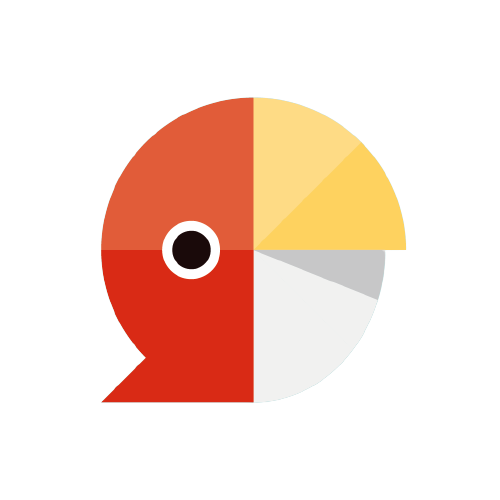25 Great Spanish Reading Practice Resources from Beginner to Advanced
¡Hola amig@s! Are you looking for some great resources to practise your Spanish reading skills?
Whether you're a beginner just starting out or an advanced learner looking to take your reading comprehension to the next level, there are plenty of resources - both free and on-demand - out there to help you improve your skills.
In this article, we'll explore some of the best Spanish reading practice resources available, including reading apps, articles, books, and even some uncommon reading material.
So, grab a cup of café con leche and get ready to take your Spanish reading skills to the next level!
Spanish Reading For Beginners
Learning to read in Spanish may be a pleasant but tough experience, especially for beginners.
Fortunately, there are many tools available to help newbies in getting started and progressing rapidly. The several possibilities for Spanish reading for beginners can actually range from traditional materials such as books and magazines to digital resources such as apps.
Here are some suggestions for graded printed materials and apps dedicated to reading in Spanish:
Reading Apps and Digital Resources
1. Newsdle
Newsdle is a great resource for anybody wishing to sharpen their Spanish while keeping up with current events and learning more about Spanish and Latin American culture. It provides students with full language immersion and assistance, making it the most student-centric reading software available and suitable for all students, no matter their level. Every article has high-quality authentic but graded material, and it also includes tools to help students with their reading practice.
2. Duolingo
Duolingo is popular for its language-learning courses, but it also offers a "Stories" feature, which provides short stories in Spanish with interactive exercises to help beginners practise their reading comprehension.
3. Beelinguapp
This app offers bilingual texts in Spanish and English, with audio recordings and interactive exercises to help users improve their reading skills. The easy bilingual switch is perfect for beginners.
4. LinguaLift
LinguaLift stores a lot of graded reading materials, from beginner to advanced levels, and every text comes with audio recordings and translation features.
5. News in Slow Spanish
This app offers news articles written in Spanish at a slower pace than typical news outlets, making it a great resource for learners who want to improve their reading comprehension. The app also offers audio recordings of the articles, so learners can practise their listening skills as well.
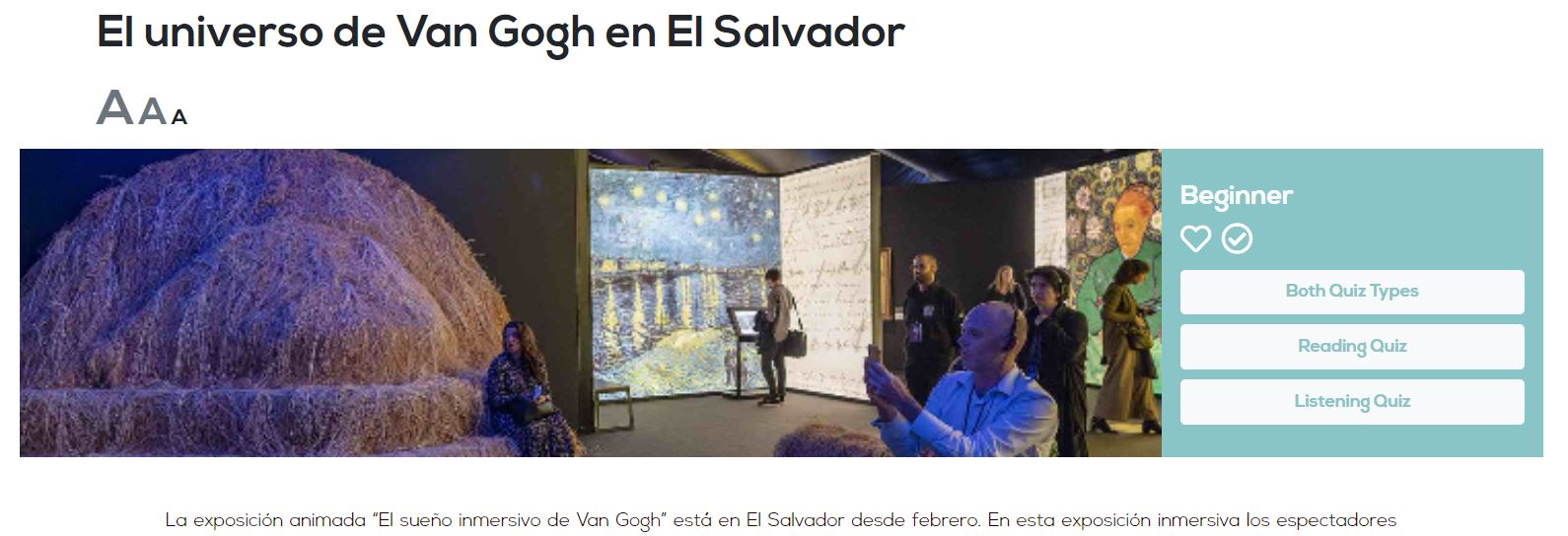
Curious to know more about reading up that can get you help started? Then you’ll find this article quite inspiring!
Graded Printed Materials
If you’re the type of student that memorises everything way better if written on paper, this one's for you!
In fact, there are a variety of Spanish reading books available for beginners, which include short stories and novels, or easy-to-read children's books.
1. "Short Stories in Spanish for Beginners" by Olly Richards
Short Stories in Spanish for Beginners was developed specifically for students from the beginner to intermediate level, with the goal of providing a sense of accomplishment and, most importantly, fun! These eight intriguing stories, mapped to A2-B1 on the Common European Framework of Reference, will both delight and give you a sense of progress when reading.
2. "Spanish for Beginners: 15 Short Stories to Help You Learn and Enjoy Spanish" by Babel Publishing
have fun with these 15 fascinating original Spanish stories, perfect for beginners and new Spanish learners. All of the stories are written with easy terminology that may be used in everyday discussions in any Spanish-speaking nation. A reading comprehension section and a quiz at the conclusion of each tale will help you to go farther and extend your knowledge.
3. "Easy Spanish Reader" by William T. Tardy
The principle of Easy Spanish Reader is that the easiest way to learn a language is to start reading it right away. This best-selling volume is appropriate for beginning to intermediate-level language learners, and it includes fascinating readings of increasing complexity that allow you to quickly improve understanding.
These resources will help you learn the basics of Spanish reading comprehension or to brush up your skills and gain confidence in your abilities.
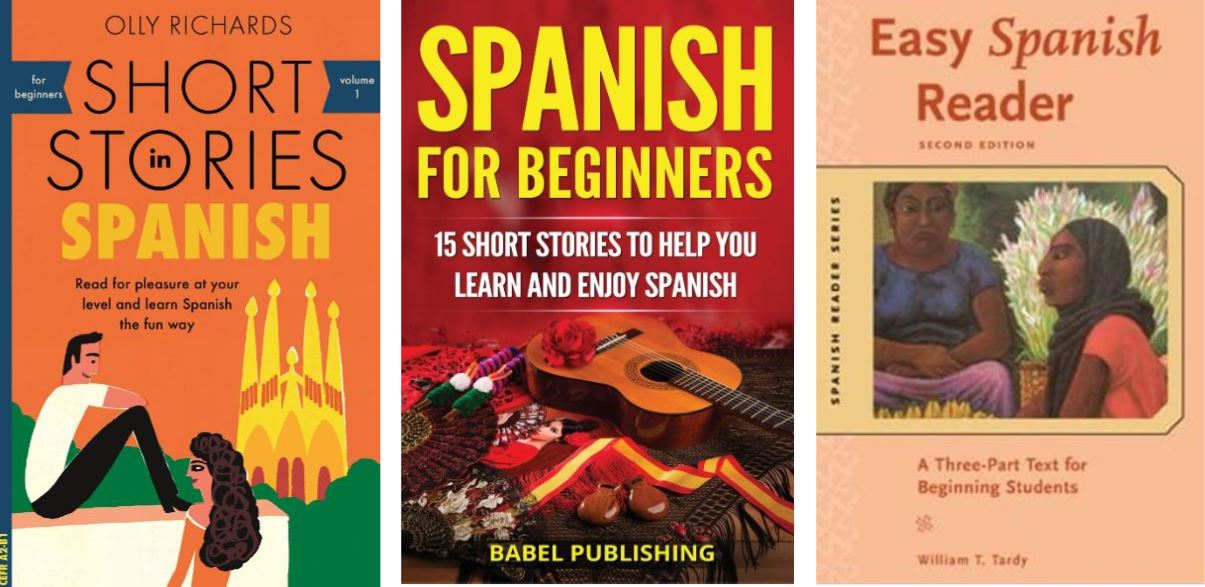
6 Tips to Get Started With Learning Spanish Through Reading
- Begin with resources tailored for your level. It is critical to select reading books that are appropriate for your level of ability. Start with simple material, such as children's novels or brief articles created for language learners, if you're a novice. As you continue, you can gradually proceed to more difficult materials.
- Make a list of new words and phrases. Make a note of any new terms or phrases you come across while you read. This will assist you in broadening your vocabulary and reinforcing grammatical skills.
- Don’t be tempted by the dictionary! Read for meaning, not translation. Try not to translate every word as you read into English. Instead, concentrate on comprehending the overall meaning of the text. This will aid in the development of your comprehension abilities as well as the training of your brain to think in Spanish.
- Reading aloud can help you improve your pronunciation and strengthen your speaking abilities. Begin by reading simple texts and progress to more complicated topics as you gain confidence.
- Use online resources. You may improve your Spanish reading skills by using internet resources such as Spanish-language news websites, blogs, and online magazines. To put your abilities to the test, you may also discover reading comprehension activities and quizzes online provided by dedicated apps.
- Joining a reading group or book club may be a terrific opportunity to polish your Spanish reading abilities while also connecting with other language learners. You may talk about the books you've read, give vocabulary and grammatical hints, and encourage one another to keep reading.
Remember that learning a language takes time and effort, so don't give up if you don't notice results right away. Continue to practise, and you will progressively improve your reading abilities and gain confidence in Spanish.
Ready for the big leap? Let’s move to more complex resources!
Spanish Reading For Intermediate and Advanced Learners
As we already mentioned, reading is an important part of language learning, but both intermediate and advanced Spanish learners could feel a little intimidated by some more complex resources.
There are a range of materials, both printed and digital, that can be used to assist enhance reading comprehension in Spanish and overcome your limits.
Here we will list some of the best resources available for intermediate and advanced Spanish learners, along with titles, and why they are useful.
Digital apps and graded resources
1. Newsdle
If you are an intermediate or advanced student who wants to improve their Spanish language skills, Newsdle is the solution you are looking for. The app is a great tool for anybody wishing to improve their Spanish comprehension and vocabulary since it has a strong emphasis on current events and culture.
The app provides authentic, high-quality articles on a variety of subjects that are rated according to the user's proficiency level, making sure that students are regularly challenged without becoming overwhelmed.
2. Readlang
Readlang provides a wide range of reading resources in a number of languages, including Spanish. The software allows students to read articles and books in Spanish while offering translations and vocabulary aid, allowing them to enhance their reading comprehension and vocabulary abilities.
3. LingQ
Another language learning service that offers a variety of Spanish reading resources such as articles, books, and news items is LingQ. The programme assists students with vocabulary and keeps track of their progress, making it a fantastic tool for intermediate and advanced students wishing to improve their reading ability.
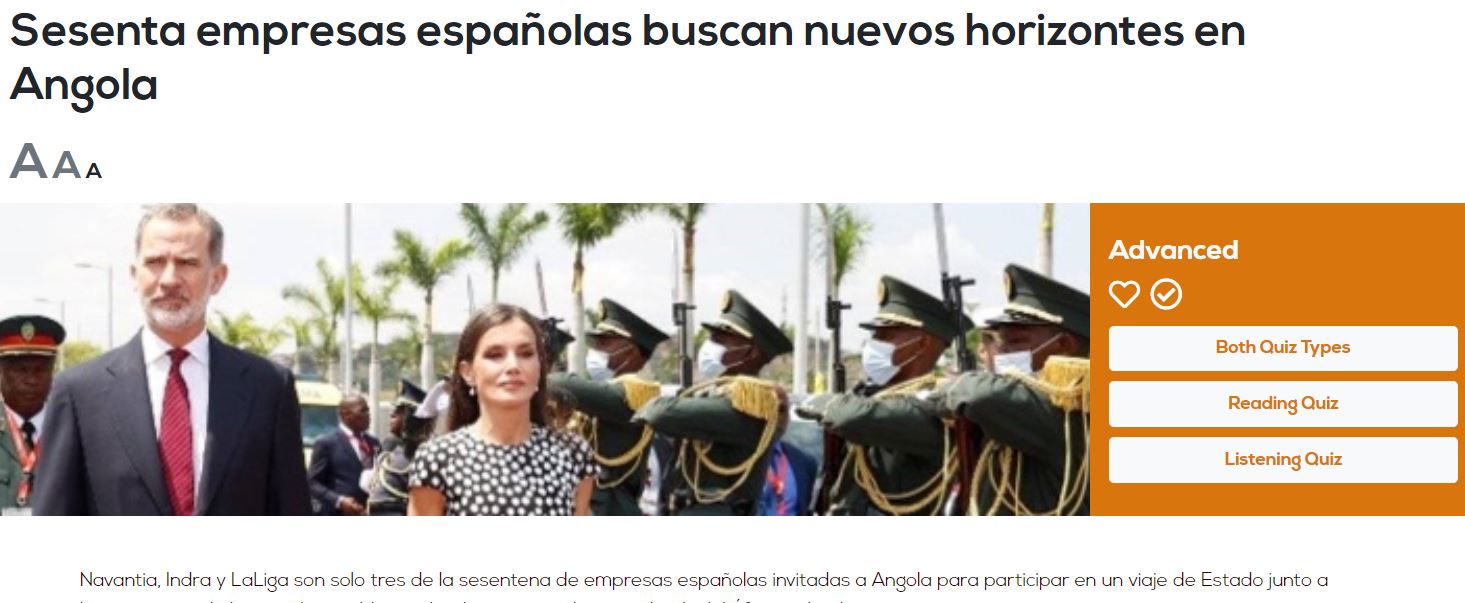
Printed and digital books
1. "La Casa de los Espíritus" by Isabel Allende
This novel, considered a classic of Latin American literature, follows the Trueba family through several generations in Chile. It is appropriate for intermediate and advanced learners since it has a large vocabulary, complex sentence patterns, and cultural allusions that will both test and develop readers' language abilities.
2. "El amor en los tiempos del cólera" by Gabriel Garca Márquez
This novel by the Nobel Prize-winning author is noted for its lush descriptions and nuanced characterizations, and it follows the story of a decades-long love affair in a Caribbean port city. It is appropriate for intermediate and advanced learners since it contains difficult vocabulary, grammatical structures, and cultural allusions that will both challenge and assist readers develop their language abilities.
3. "Veinte Poemas de Amor y Una Canción Desesperada" by Pablo Neruda
The Chilean poet's collection of poetry is regarded as one of his most famous works, and it addresses themes of love, desire, and sorrow. It is appropriate for intermediate and advanced learners since it has a wide range of vocabulary, metaphorical language, and cultural allusions that will both challenge and assist readers develop their language abilities.
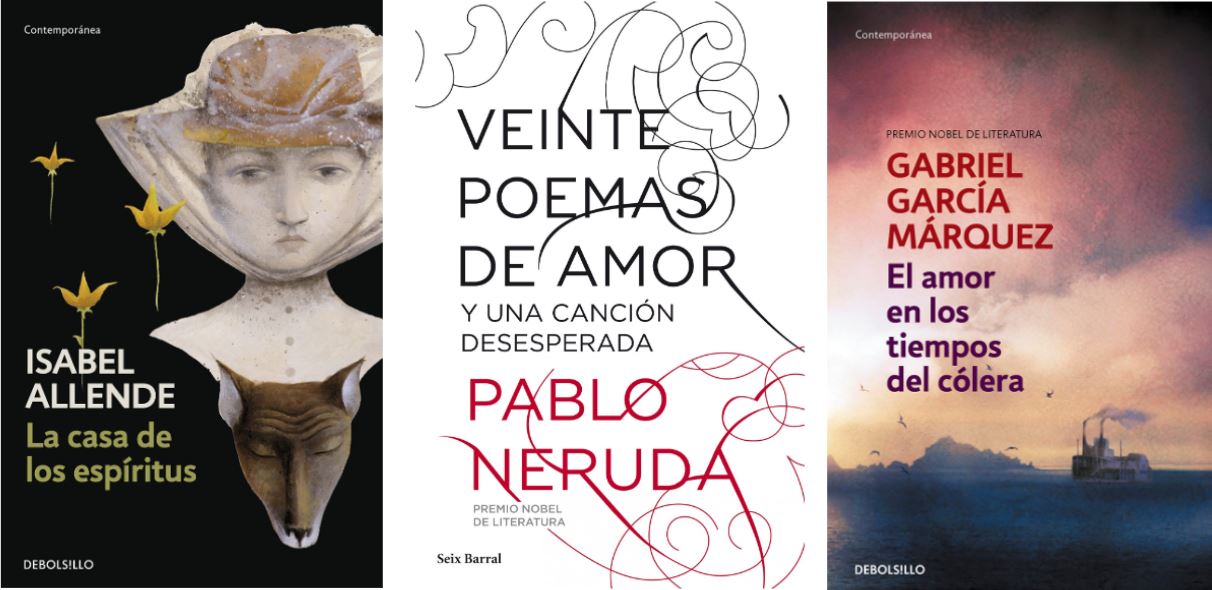
Newspapers and magazines
1. El País
This Spanish daily is widely recognised as one of the most prominent and renowned journals in Spain and Latin America, with coverage ranging from politics to culture to sports. It is appropriate for intermediate and advanced students since it contains sophisticated and nuanced writing on current events and cultural subjects, and it will push readers to broaden their vocabulary and comprehension of Spanish-language news and culture.
2. Letras Libres
It is a Mexican publication that covers a wide range of topics, including literature, politics, and culture. It comprises high-quality material by some of the most well-known Spanish-language writers and journalists, making it an excellent resource for increasing vocabulary, reading comprehension, and cultural knowledge. Furthermore, "Letras Libres" offers digital subscriptions to its magazine, making it easily accessible to students worldwide.
3. El Mercurio
This is another outstanding option as it offers comprehensive coverage of Chilean regional news and cultural events, as well as opinion pieces, interviews, and sections on art, science, and technology. It's a great resource for students who want to stay up to date on current events in Latin America while also strengthening their reading skills.
Related readings: Top 7 Easy News Articles in Spanish
Unconventional reading materials
1. "El Laberinto del Fauno" by Guillermo del Toro
This Oscar-winning Mexican director's screenplay depicts the narrative of a little girl who escapes into a dream realm during the Spanish Civil War. It is appropriate for intermediate and advanced learners since it has rich dialogue, interesting characters, and historical and cultural references that will both challenge and assist readers develop their language abilities. It is available online through a number of script databases.
2. Graphic Novels
Graphic novels, such as "El Eternauta" by Héctor Germán Oesterheld and "Mafalda" by Quino, may give students a one-of-a-kind reading experience that mixes text with pictures. This style can assist students in better comprehending complicated language and cultural allusions.
3. Poetry
Poetry may push students to connect with language in more imaginative and complex ways. Poem collections, such as Pablo Neruda's "Veinte Poemas de Amor y una Canción Desesperada," may expose students to many types and subjects of poetry while also giving them the opportunity to develop their vocabulary and comprehension abilities.
4. Short Stories
Short story collections, such as "Bestiario" by Julio Cortázar or "Los funerales de la Mamá Grande" by Gabriel Garcá Márquez, can provide learners with bite-sized reading experiences that are more digestible than lengthier books. Short stories may also introduce learners to a variety of genres and themes while also helping them improve their reading comprehension and vocabulary.
These are just a handful of the many Spanish reading options for intermediate and advanced students. They offer a wide range of vocabulary, complicated grammatical structures, and cultural allusions that will both challenge and assist readers develop their language abilities.

6 Reading Tips & Tricks to Improve Your Spanish
- Consider pushing yourself with more difficult material, such as novels or nonfiction works published in Spanish, if you are an intermediate or advanced student. This will help you to increase your vocabulary, acquire more complicated grammar structures, and improve your reading comprehension.
- Going online and reading broadly and diversely can help you increase your grasp of numerous genres and styles of writing in Spanish. This can also help you become more culturally savvy and comprehend the Spanish-speaking world better.
- Don’t overuse your dictionary. While it's vital to check up new terms and phrases when you come across them, don't rely on it too much. Instead, attempt to deduce the meaning of new terms using context cues, and only look up words that are crucial to comprehending the text.
- You should take notes and summarise. While reading, taking notes can help you retain new vocabulary and grammar principles. Try summing the material in your own words, emphasising major aspects, and drawing parallels to other works or subjects you've studied.
- Practise reading speed and fluency. Once you've honed your reading abilities, try setting a timer and reading a piece as rapidly and precisely as possible. You may also enhance your pronunciation and fluency by reading aloud.
- Participate in a book club or discussion group. I listed this point for beginners, so why should I include it also here? Well, NEVER underestimate the power of a (study) group! Participating in a book club or discussion group can help you stay motivated and interested while reading. You may also hone your speaking and listening abilities by debating the readings with other students.
Remember that the key to enhancing your Spanish via reading is to push yourself, read widely and diversely, and practise on a regular basis. You may become a confident and proficient Spanish reader with effort and perseverance.
Congratulations!
You've taken the first step towards improving your Spanish language skills by exploring the world of Spanish language reading resources.
As you can see, there are so many options available to help you or your students practise your reading comprehension, expand the vocabulary, and gain a deeper understanding of Spanish language and culture.
From graded readers and apps for beginners to unconventional reading materials like graphic novels and podcasts for intermediate and advanced learners, there's something for everyone.
By incorporating reading into your language learning routine, you can build your fluency, increase your confidence, and take your Spanish language skills to the next level.
So don't be afraid to dive in and explore the many resources available to you! With a little time and effort, you'll be amazed at how much progress you can make.
Author:

Fabia Parodi
Fascinated by foreign languages and cultures, Fabia Parodi was determined to be a polyglot since she was a child. Fluent in Italian, English, French and Spanish and competent in Mandarin Chinese, Fabia is an experienced language teacher, translator and multicultural marketing specialist.
When in class, she always make sure to include graded and authentic materials in her lessons to expose students to foreign cultures and to introduce a more natural use of the language they are learning. The two things she loves more than languages are travelling and exchanging stories with people from all over the world.
